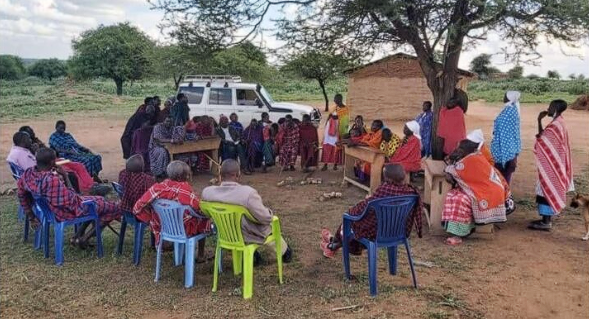
This report outlines the health needs and priorities of remote Maasai communities in Northern Tanzania, specifically in the Simanjiro region where our project partners, OMASI are based. The research was done as part of an Innovate Funded Project, exploring how video consultations and batched medicine delivery could help provide quality access to healthcare for remote, unserved communities. OMASI’s strength of relationship with, and influence in, the local communities, and their strong relationship with local medical practitioners, international medical NGOs, and district health officials, made Simanjiro an ideal location to test and implement a medical teleconsultation system. However, the approach and learnings should also be transferable to other ODA countries.
A full understanding of the current healthcare system was required to fully contextualise community priorities, and highlight and infer their unmet needs. For this reason, a number of community engagement tasks were planned to build a background picture of the community healthcare situation, and from these, draw out the key healthcare priorities. These include:
- Two interviews with a doctor in Terat, who works with rural communities
- An interview with a city doctor from Arusha
- Interviews with District Health Officials in the Simanjiro region
- Focus groups with remote community members, separated into women, elders (male) and youth (male). These were conducted in Kiruru and Loswaki, and a separate survey was carried out for one respondent in Ormoti.
- Interviews with disabled/marginalised individuals in Kiruru and Ormoti.
This information was complemented with independent research and information gained through discussion with other international health NGOs that operate in the region.




The findings highlighted that there is a market and commercial opportunity for a tele-health consultation system. Even if the doctor cannot treat the patient remotely, gaining an early diagnosis for illnesses could be invaluable for cases where patients are unwilling to travel and pay money to reach a doctor when they are unsure of the severity of their illness. More research is required into how it could fit into the existing healthcare infrastructure, and appropriate pricing for such a system.
One of the largest challenges that should be explored for maximum impact of the system, is how a remote diagnosis can enable patients to receive medication at a fair price. At the hospital/health centre/dispensary, patients can receive medication at a subsidised price following a prescription, subject to availability. If they do not visit the health centre, they may buy medicine from a private pharmacy, where prices are often higher. There may also be restrictions to the medication they can buy without an officially stamped prescription from the doctor’s surgery. Telehealth trials have shown that medicine delivery from the subsidised dispensary and from pharmacies to the telehealth consultation point, following a consultation, is possible. Putting in place the infrastructure for a longer term, larger scale trial may be more complex, but early trial results are extremely promising and show that the community needs for medicine and healthcare can be met.









